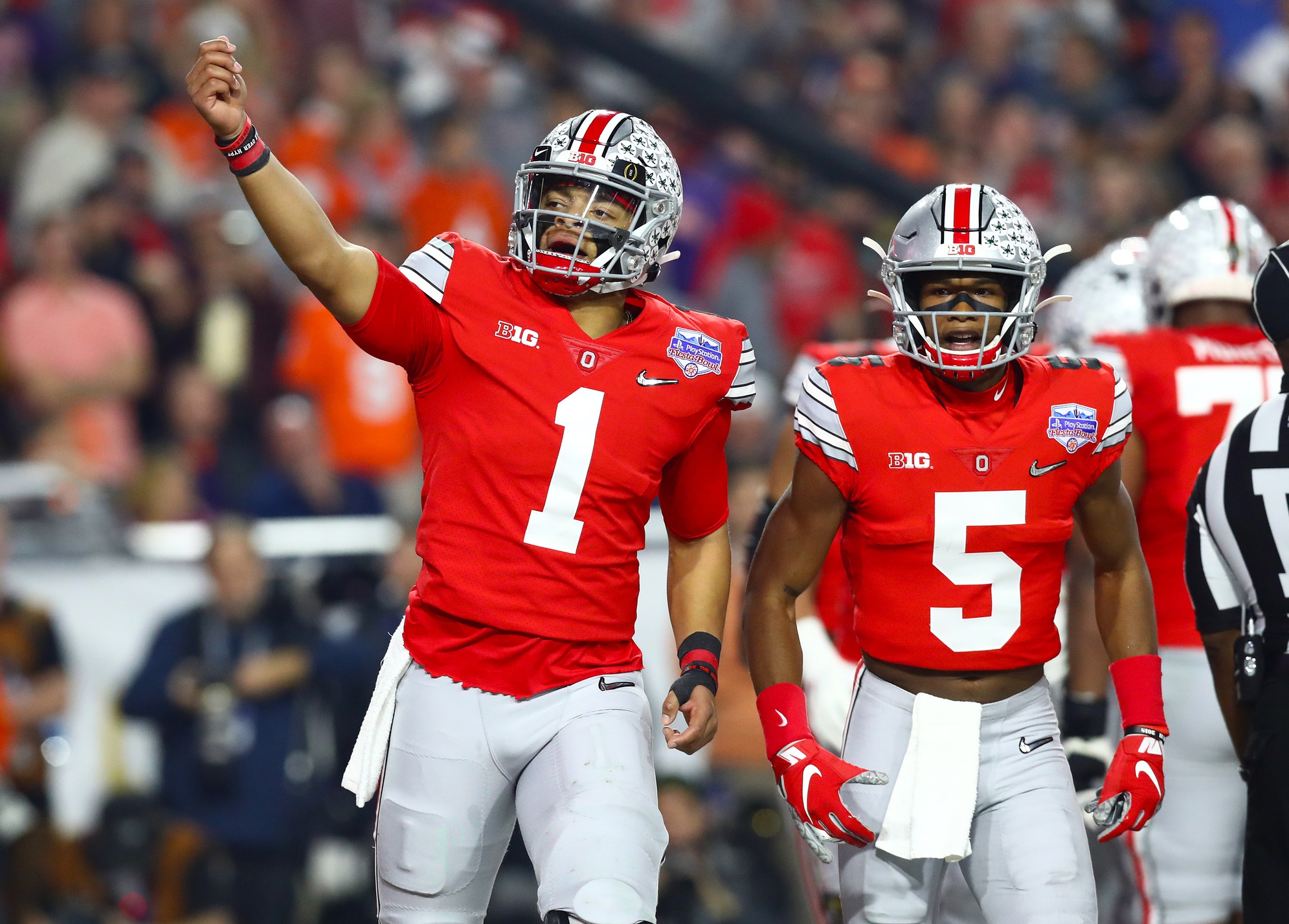
I’m guessing if you read that headline and you’re an SEC fan, 2 words came to mind.
It. Won’t.
Like, why would the Big Ten returning to play the weekend of Oct. 24 in a last-ditch attempt to qualify for the Playoff matter when the conference hasn’t won a Playoff game since the 2014 season? It’s back, sure, but the Big Ten suffered opt-outs left and right during a 2-month stretch that’s been as embarrassing for the league as any in the 21st century. Who cares, you ask?
Well, those are all perfectly fair points. At the same time, the Big Ten returning to play isn’t a this or that issue. It’s not simple enough to say “it won’t.” Even if it ends up that the Big Ten’s only chance of making the Playoff is buying a ticket, there will at least be some sort of impact.
Let’s start with the elephant in the room — Ohio State having legitimate national title aspirations under normal circumstances impacted this decision, and you can’t tell me it didn’t. Returning a draft-eligible player like Justin Fields fueled the sense of urgency in Columbus. Fields was a play from beating Clemson and leading the Buckeyes to a national title berth.
Does Ohio State have a shot at a national title with a shortened season? We can’t definitively say “no” at this point, but there are a few factors that need to be considered. For starters, is Fields able to get Shaun Wade and Wyatt Davis to opt in? Returning a pair of preseason All-Americans would certainly make the Buckeyes look more legitimate instead of a team with some noticeable absences.
But perhaps of equal importance for Ohio State’s Playoff chances would be a slew of Big Ten players opting back in. If we saw players like Micah Parsons, Rondale Moore and Rashod Bateman return, that would change the narrative that we’re about to see a watered-down Big Ten. Remember, without any nonconference games, we’re going to be more entrenched in a preseason view of the conference than ever. That’s why it was so important for the SEC to have 7 teams crack the preseason AP Top 25. (The B1G had 2 in the top 7, 3 in the top 12 and 6 ranked overall.)
Let’s take a step back and return to why the SEC stood to benefit from the Big Ten not having a season. It’s simple, really. Exposure.
When all of us were watching Power 5 football this past weekend, you know what we weren’t thinking about? The Big Ten.
Well, the Big Ten tried to change that when it leaked Saturday that there was reportedly serious momentum for a fall start. Coincidence? Nope. Of course that leaked on the first Saturday in which other Power 5 conferences were in action while the Big Ten sat at home.
The Big Ten’s return to play won’t allow the SEC, ACC and Big 12 to dominate the national audiences and all of that mid-week conversation that’s synonymous with college football. It won’t allow for that obvious negative recruiting line of “the Big Ten doesn’t really care about football.” Well, maybe it will. Who knows.
All of this has been such a mess that it’s impossible to see the Big Ten not coming out of 2020 with anything but egg on its face.
Too many leaked reports. Too many questions about communication. Too many rogue decisions.
The Big Ten could have a season, put a 9-0 Ohio State team in the Playoff and the SEC could still come out of this having widened the gap. Even Big Ten fans wouldn’t argue with that. That’s how bad this has been for the league.
And what’s to say that the league is done shooting itself in the foot? It already showed once that it didn’t trust the protocols it spent months to put in place. What’s to say a rash of positive tests won’t result in the league shutting down again?
There’s no margin for error for the Big Ten. At all. This 5% threshold for positive tests canceling games is probably tougher than the casual fan realizes:
Uhhh, that 5% threshold is….. going to be a problem.
Nine out of 122 Auburn players tested positive a few weeks ago. That’s more than 7%. https://t.co/YBywvcZPQi
— Josh Vitale (@JoshVitale) September 16, 2020
Think about that for a second. Also think about that 21-day quarantine for positive tests. That has potential to be nearly half of the season (as many as 4 games). It’s inevitable that a season without any by weeks will have teams playing fewer than the 9 scheduled games, including championship week.
Would a 7-0 Ohio State team make the Playoff? My guess is yes based on the fact that the Buckeyes were a preseason No. 2 team. They were ranked higher than any SEC team coming into the year.
We can’t assume an 8-1 Ohio State team is a lock because we don’t know what the field will look like, though it’s worth mentioning that a 1-loss Ohio State team missed out on the Playoff in 2018. Why? It was competing against other 1-loss conference champs, and those teams didn’t have a blowout loss to Purdue. If Ohio State loses a nail-biter to Penn State in the regular season but still goes on to win the league title having played several ranked teams, perhaps that conversation is different.
Speaking of Penn State, I’m honestly not sure that more than 2-3 Big Ten teams would be considered for the Playoff in this shortened season. If Iowa goes 8-0 playing mostly Big Ten West teams and beating Ohio State in a title game, the narrative will be that the Big Ten is down if a team like that ran the table. If you don’t believe me, go back to 2015 when some were debating if an undefeated Iowa team would be Playoff-worthy if it won the Big Ten championship. And that was a year removed from the Big Ten winning the first Playoff; not 6 years removed from winning a Playoff game like it is now.
That was the last time the Big Ten had a team (2015 OSU) as highly touted as this year’s Ohio State squad. The Big Ten elected for this October start date over Thanksgiving with that in mind. That’s true regardless of whether the league admits it. Unlike when the Big Ten inexplicably switched from the 8-game conference schedule to the 9-game conference schedule in 2016, the Playoff was certainly at the forefront of this dramatic 180.
How ironic that the Big Ten is going to sell the notion its 8-game conference schedule should be held in the same regard as the SEC’s 10-game conference schedule. I mean, 2020 is already totally backward. I suppose that’s par for the course these days.
The Big Ten’s path to potentially block a second SEC team from making the field is simple — no more major opt-outs, get big names to opt back in, have several teams in the top 10 and yield an unbeaten conference champ that started in the top 15.
Did I say it was simple? I meant it’s a high-wire act that only a few teams are physically capable of conquering. There’s now at least a path, which is more than the Pac-12 can say.
The Big Ten is hoping that its rogue world will collide with the SEC’s in a few months. And if it doesn’t, well, I’m sure many SEC fans will have a 2-word response to this mid-September headline.
It. Didn’t.
Connor O'Gara is the senior national columnist for Saturday Down South. He's a member of the Football Writers Association of America. After spending his entire life living in B1G country, he moved to the South in 2015.







